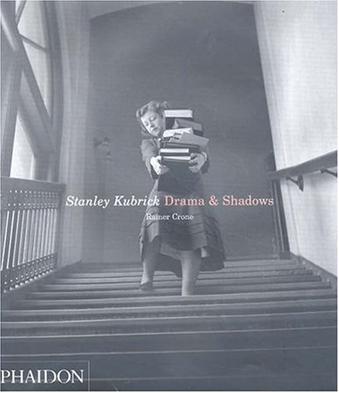欢迎来到相识电子书!
标签:StanleyKubrick
-
Stanley Kubrick
Born in New York City in 1928, Stanley Kubrick began taking photographs when in high school. At sixteen, he sent a photograph he took of a newsstand after President Roosevelt's death to Look Magazine. The publication of the photograph marked the beginning of Kubrick's work for the magazine, which lasted until 1950, when Kubrick made his first 16mm documentary film. During those five years Kubrick completed dozens of photographic reportage assignments in New York City as well as abroad. The resulting thousands of negatives have remained in the archives of Look Magazine ever since. Kubrick's photographs vary in subject, but people are the central focus of attention, as is his commitment to narration. Whether capturing the meditative state of passengers in a series of portraits made in the New York subway, following famous boxer Rocky Graziano on the ring and in intimate moments, portraying the coming of age of socialite Betsy Von Furstenberg, or narrating the tale of a shoe-shine boy in the streets of New York City, Kubrick draws psychological portraits that combine drama, irony, and often mystery, anticipating his trademark cinematic style. If Kubrick's photographs are fascinating accounts of life in the late 1940s, they are also a major contribution to American photography of that era. At nineteen, Kubrick already had an immense talent in constructing complex compositions in which camera positioning and lighting played a crucial role. The book is introduced by an essay by Rainer Crone, who also edited the selection of photographs for this book. Crone is an expert on Kubrick's photographic work, and has already published a catalogue on this subject (see Related Titles below). An art historian, he gives context and examines Kubrick's photographs in relation to not only his later films but also the history of twentieth-century art and photography. Crone also wrote short introductions to most stories in the book. An invaluable contribution to the history of photography, this book explores how one of the most influential and successful film directors of our time used photography to master visual techniques and cultivate his signature style. -
Stanley Kubrick's Napoleon: The Greatest Movie Never Made
This book features the greatest film never made. It features Kubrick's unfilmed masterpiece. Tucked inside of a carved-out book, all the elements from Stanley Kubrick's archives that readers need to imagine what his unmade film about the emperor might have been like, including a fascimile of the script; a unique art object, historical document, and artistic statement. For 40 years, Kubrick fans and film buffs have wondered about the director's mysterious unmade film on Napoleon Bonaparte. Slated for production immediately following the release of "2001: A Space Odyssey", Kubrick's "Napoleon" was to be at once a character study and a sweeping epic, replete with grandiose battle scenes featuring thousands of extras. To write his original screenplay, Kubrick embarked on two years of intensive research; with the help of dozens of assistants and an Oxford Napoleon specialist, he amassed an unparalleled trove of research and preproduction material, including approximately 15,000 location scouting photographs and 17,000 slides of Napoleonic imagery from books and libraries across Europe. No stone was left unturned in Kubrick's nearly-obsessive quest to uncover every piece of information history had to offer about Napoleon. But alas, Kubrick's movie was not destined to be: the film studios, first M.G.M. and then United Artists, decided such an undertaking was too risky at a time when historical epics were out of fashion. Taschen's sumptuous, limited-edition tribute to this unmade masterpiece makes Kubrick's valiant work on "Napoleon" available to fans for the first time. Tucked inside of a carved-out book are all the elements you need to imagine what Kubrick's film about the emperor might have been like. Along with the fascimile of Kubrick's final draft of the screenplay are 10 individual books exploring the various chapters of the director's work on the project: writing, research, costume design, location scouting, budgeting, and correspondence. The text includes the complete original treatment, an essay examining the screenplay in a historical context, an essay by Jean Tulard on Napoleon in cinema, and a transcript of interviews Kubrick conducted with Oxford professor Felix Markham. At once an art object, historical document, and artistic statement, this unique publication offers readers a chance to experience the creative process of one of cinema's greatest talents as well as a fascinating exploration of the enigmatic figure that was Napoleon Bonaparte.
热门标签
下载排行榜
- 1 梦的解析:最佳译本
- 2 李鸿章全传
- 3 淡定的智慧
- 4 心理操控术
- 5 哈佛口才课
- 6 俗世奇人
- 7 日瓦戈医生
- 8 笑死你的逻辑学
- 9 历史老师没教过的历史
- 10 1分钟和陌生人成为朋友


